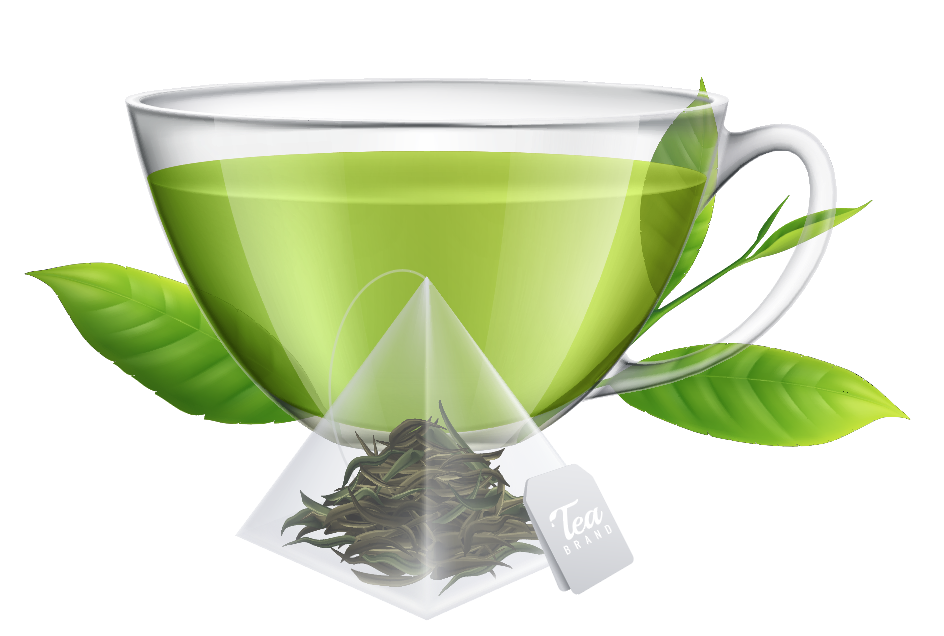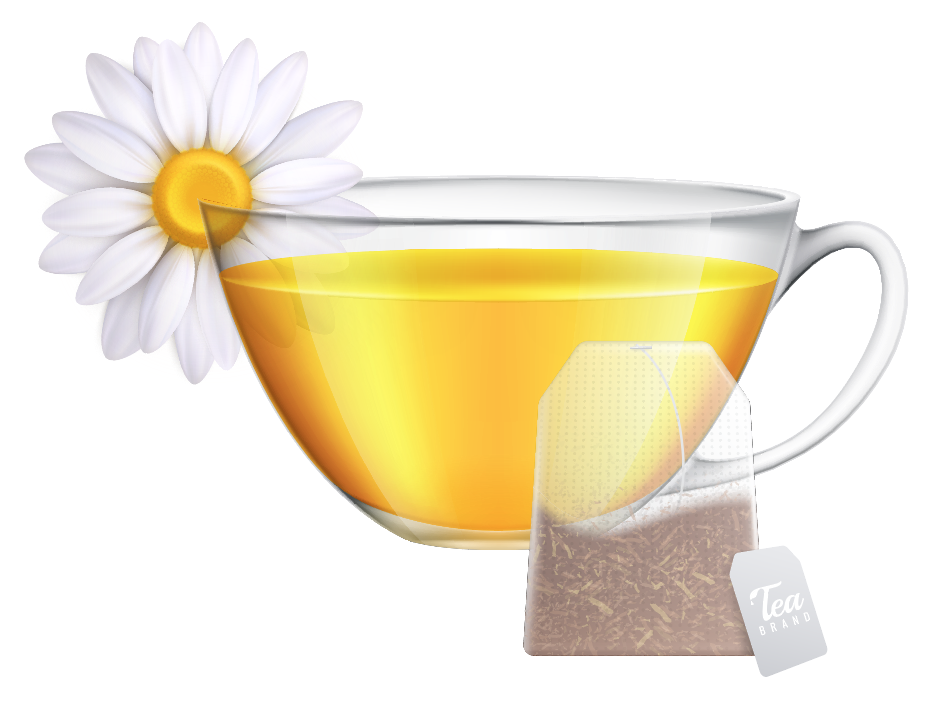|
As we wrote in our previous blog, flavonoids been well documented for their various health- promoting effects. In regard to brain health, these naturally occurring phytonutrients exert multiple neuroprotective actions, such as protection of neurons from neurotoxins, suppression of neuron-inflammation and thus improve memory, learning and cognitive function The flavonoids-rich foods such as green tea, cocoa, blueberries, and other foods improve the various states of cognitive dysfunction. More than 7,000 flavonoids have been reported from natural sources including medicinal plants, vegetables, fruits and wines. Flavonoids can increase brain cell function and neuronal survival by reducing oxidative stress, activating neurotrophic factor signaling pathways, preventing alterations in protein processing, reducing synaptic dysfunction, and inhibiting inflammatory responses. Flavonoids are also anti-apoptotic and may have anticancer activity by their ability to inhibit cell proliferation and induce apoptosis and autophagy. Researchers have found that flavonoids can dampen the progression of pathological symptoms of neurodegenerative diseases by inhibiting neuronal apoptosis (death) induced by neurotoxic substances including free radicals and β-amyloid proteins (Aβ). Additionally, they enhance vascular blood flow and enhance nerve cell growth particularly in the hippocampus, called the primary memory center of the brain. Alzheimer’s disease: shall we have a cup of tea? Extensive investigations have noted that flavonoids attenuate the initiation and progression of AD-like pathological symptoms and related neurodegenerative disorders. Flavonoids including epicatechin-3-gallate (EGCG is found in green tea), gossypetin ( red hibiscus flower) , quercetin and myricetin (a flavonoid found in tea, berries, fruits, wine, and herbs) are reported to block β-amyloid, and tau aggregation, scavenge free radicals and sequester metal ions at clinically low concentrations.
Though green tea is often believed to be richer in polyphenols than black or oolong (red) teas, studies show that with the exception of decaffeinated tea, all plain teas have about the same levels of these chemicals, albeit in different proportions. Especially significant, it thought that EGCG can cross the blood-brain barrier (BBB). Looking for more ways to savor delicious and healthful tea? Check here for an easy recipe!
https://amosinstitute.com/blog/cheers-to-brain-health-a-drink-to-improve-memory/
Onions contain the highest levels — lower levels can be found in broccoli, blueberries, cauliflower, curly kale, leeks, spinach and strawberries.
Accumulation of toxic aggregates of the beta-amyloid proteins in certain brain regions is often linked to the decline in cognitive function characteristic of Alzheimer’s disease. Microglia (the brains primary immune cells) constantly scavenge various waste materials in the brain including damaged or apoptotic neurons and Aβ. Through phagocytosis of Aβ, microglia prevent the accumulation of Aβ plaque in the brain. When the microglia scavenge amyloid-beta (Aβ) in the brain, this helps ameliorate cognitive impairments brought on by Alzheimer's disease. A recent study conducted in mice suggests that gossypetin, a compound derived from the flower of the roselle plant, which is a hibiscus species, also may hold promise as a therapeutic agent for Alzheimer’s.
This study showed hesperidin also has affinity for the molecular docking site in SARS CoV 2 and, as such, it may hold promising antiviral properties.
Only a limited number of clinical studies have examined curcumin’s effect on human cognitive functioning, and the results are inconclusive. Researchers are nearly unanimous in their opinion that a combination of curcumin with other dietary supplements, such as piperine, α-lipoic acid, N-acetylcysteine, B vitamins, vitamin C, and folate, has a synergistic effect and enhances its neuroprotective effects. The BBB is the major obstacle for the delivery of curcumin into the brain, limiting its therapeutic potential. The native form of curcumin is BBB permeable, but once it has undergone biotransformation (metabolized into glucuronides), the ability to pass the barrier is lost since the conjugated metabolites are bulky water-soluble molecules and undergoes quick renal clearance. The formulation of curcumin-galactomannan complex is thought to have improved central nervous system (CNS) distribution. CurQfen®, a new generation curcumin for brain health, a green formulation of curcumin and de-bitterised fenugreek fiber as self-emulsifying hydrogel scaffold, is capable of delivering high level of BBB-permeable ‘free curcumin’ even at a low dosage of 250mg single dose. BCM-95® is a patented curcumin formula that combines curcumin and volatile agents in turmeric essential oil to increase bioavailability. The formula is also comprised of lecithin and medium chain triglycerides to further assist in this process. Turmeric essential oil constitutes approximately 9% of the formulation. A 2021 study, published in Antioxidants, built on ample previous studies demonstrating the powerful antioxidant, anti-inflammatory, and anti-amyloid properties of curcumin with a product called CURCUGREEN's (BCM-95).
A 12-week study in 111 healthy older adults found that taking 150 mg of GSE daily improved attention, language, and both immediate and delayed memory
It has been shown that the active components of propolis have high binding potential to cellular Angiotensin-converting enzyme-2 (ACE-2) receptors of the S1 spike protein and also has immunomodulatory, anti-thrombosis activities. Flavonoids as cholinesterase inhibitors. In the brain of a person with Alzheimer’s disease, there are lower levels of a chemical called acetylcholine. Acetylcholine helps to send messages between certain nerve cells. In Alzheimer’s disease some of the nerve cells that use acetylcholine are also lost. The pharmaceutical products like donepezil, rivastigmine and galantamine all prevent an enzyme called acetylcholinesterase from breaking down acetylcholine. This means there is a higher concentration of acetylcholine in the brain, which leads to better communication between nerve cells. Flavonoids also can inhibit this enzyme (acetylcholinesterase (AChE) and help restore acetylcholine (ACh) which is vital for memory by drawing upon their established antioxidant activity, which subsequently could be helpful for Alzheimer’s treatment.
Flavonoids in long COVID. Given all of these beneficial properties and study-proven effects, it is believed that flavonoids could be helpful in treating long COVID and post-vaccine injuries. Of note, a recent study found that oral PEA-LUT 700 + 70 mg administered bid for eight weeks increased the GABABergic activity and cortical plasticity. PEA belongs to the family of endocannabinoids, naturally produced in the body, and largely found in several food sources which can exert anti-inflammatory and neuroprotective effects. Another study found that palmitoylethanolamide and luteolin (PEA-LUT) have anti-inflammatory and neuroprotective properties; the dose used was PEA-LUT (700 mg + 70 mg) per day. PEA also confers neuroprotection in the CNS by shifting microglia from the M1 pro-inflammatory phenotype to M2 anti-inflammatory phenotype. Luteolin, a flavonoid with anti-inflammatory and neuroprotective properties, exerts its effects through neurotrophic and antioxidant mechanisms. Luteolin increases the expression of the brain-derived neurotrophic factor (BDNF), which supports neuronal survival, growth, and plasticity. Additional research also looked at the value of plant-based compounds, specifically pomegranate peel extract, as a possible novel antiviral therapy. Can flavonoids help with spike protein burden? Flavonoids such as quercetin, myricetin, baicalin, propolis, hesperidin and epigallocatechin gallate (EGCG), have the ability to prevent spike protein from binding to the ACE 2 receptor. Dandelion tea also effectively binds to this docking site preventing spike protein from binding to the ACE 2 receptor. With their beneficial anti-inflammatory effects and ability to protect cells oxidative damage, flavonoids can be an integral part of your efforts to help ensure optimal brain and overall health. They can help the body function more efficiently while protecting it against everyday toxins and stressors. As always, we encourage you to consult your physician before making any dramatic changes or additions to your current diet – especially if you are taking prescribed medications for other conditions. While it’s preferred we get our nutrients from whole, fresh food, if you do choose to supplement make sure you opt for a high quality brand for more assurance it contains the stated ingredients. Let us know if you have questions or if we can provide any additional information – we’re here to help! In health and healing, Dr. Suzanne Gazda For more related reading from our blog archives: https://www.suzannegazdamd.com/blog/study-finds-therapeutic-antiviral-effects-with-vitamin-c-quercetin-administration https://www.suzannegazdamd.com/blog/food-for-thought-and-brain-health https://www.suzannegazdamd.com/blog/new-study-finds-that-dietary-flavonoids-could-help-maintain-cognitive-function References: Harvard Health Publishing https://www.health.harvard.edu/mind-and-mood/the-thinking-on-flavonoids Zhang, HW., Hu, JJ., Fu, RQ. et al. Flavonoids inhibit cell proliferation and induce apoptosis and autophagy through downregulation of PI3Kγ mediated PI3K/AKT/mTOR/p70S6K/ULK signaling pathway in human breast cancer cells. Sci Rep 8, 11255 (2018). https://doi.org/10.1038/s41598-018-29308-7 Harvard T.H. Chan School of Public Health https://www.hsph.harvard.edu/nutritionsource/food-features/tea/ Rizwan, A., Zinchenko, A., Özdem, C. et al. The effect of black tea on human cognitive performance in a cognitive test battery. Clin Phytosci 3, 13 (2017). https://doi.org/10.1186/s40816-017-0049-4 Pervin M, Unno K, Nakagawa A, et al. Blood brain barrier permeability of (-)-epigallocatechin gallate, its proliferation-enhancing activity of human neuroblastoma SH-SY5Y cells, and its preventive effect on age-related cognitive dysfunction in mice. Biochem Biophys Rep. 2017;9:180-186. Published 2017 Jan 5. doi:10.1016/j.bbrep.2016.12.012 https://www.ncbi.nlm.nih.gov/pmc/articles/PMC5614586/ Pervin M, Unno K, Takagaki A, Isemura M, Nakamura Y. Function of Green Tea Catechins in the Brain: Epigallocatechin Gallate and its Metabolites. International Journal of Molecular Sciences. 2019; 20(15):3630. https://doi.org/10.3390/ijms20153630 Yongjie Li, Sibai Zhou, Jinze Li, Yuhua Sun, Hamlati Hasimu, Rui Liu, Tiantai Zhang. Quercetin protects human brain microvascular endothelial cells from fibrillar β-amyloid1–40-induced toxicity. Acta Pharmaceutica Sinica B. Volume 5, Issue 1, 2015, Pages 47-54, ISSN 2211-3835. https://doi.org/10.1016/j.apsb.2014.12.003. https://www.sciencedirect.com/science/article/pii/S2211383514001245 Science Direct - Flavanol https://www.sciencedirect.com/topics/chemistry/flavonol Chen AY, Chen YC. A review of the dietary flavonoid, kaempferol on human health and cancer chemoprevention. Food Chem. 2013;138(4):2099-2107. doi:10.1016/j.foodchem.2012.11.139 https://www.ncbi.nlm.nih.gov/pmc/articles/PMC3601579/ Dabeek WM, Marra MV. Dietary Quercetin and Kaempferol: Bioavailability and Potential Cardiovascular-Related Bioactivity in Humans. Nutrients. 2019;11(10):2288. Published 2019 Sep 25. doi:10.3390/nu11102288 https://www.ncbi.nlm.nih.gov/pmc/articles/PMC6835347/#:~:text=The%20richest%20plant%20sources%20of,kaempferol%2C%20respectively%20%5B17%5D. Science Direct – Chemistry https://www.sciencedirect.com/topics/chemistry/myricetin Jo, K.W., Lee, D., Cha, D.G. et al. Gossypetin ameliorates 5xFAD spatial learning and memory through enhanced phagocytosis against Aβ. Alz Res Therapy 14, 158 (2022). https://doi.org/10.1186/s13195-022-01096-3 North Carolina State Extension https://plants.ces.ncsu.edu/plants/hibiscus-sabdariffa/ Agrawal, P., Agrawal, C., Blunden, G. Pharmacological Significance of Hesperidin and Hesperetin, Two Citrus Flavonoids, as Promising Antiviral Compounds for Prophylaxis Against and Combating COVID-19. Sage Pub. (2021) https://journals.sagepub.com/doi/pdf/10.1177/1934578X211042540 Benameur T, Giacomucci G, Panaro MA, et al. New Promising Therapeutic Avenues of Curcumin in Brain Diseases. Molecules. 2021;27(1):236. Published 2021 Dec 31. doi:10.3390/molecules27010236. https://www.ncbi.nlm.nih.gov/pmc/articles/PMC8746812/ Parachikova, A., Green, K., Hendrix, C., LaFerla, F. Formulation of a Medical Food Cocktail for Alzheimer's Disease: Beneficial Effects on Cognition and Neuropathology in a Mouse Model of the Disease. PLOS One. 2010. https://journals.plos.org/plosone/article?id=10.1371/journal.pone.0014015 Yongjie Li, Sibai Zhou, Jinze Li, Yuhua Sun, Hamlati Hasimu, Rui Liu, Tiantai Zhang, Quercetin protects human brain microvascular endothelial cells from fibrillar β-amyloid1–40-induced toxicity, Acta Pharmaceutica Sinica B, Volume 5, Issue 1, 2015, Pages 47-54, ISSN 2211-3835, https://doi.org/10.1016/j.apsb.2014.12.003. https://www.sciencedirect.com/science/article/pii/S2211383514001245 Askarizadeh A, Barreto GE, Henney NC, Majeed M, Sahebkar A. Neuroprotection by curcumin: A review on brain delivery strategies. Int J Pharm. 2020;585:119476. doi:10.1016/j.ijpharm.2020.119476. https://pubmed.ncbi.nlm.nih.gov/32473377/ Aman Khanna, Syam Das S, R. Kannan, Andrew G. Swick, Cristina Matthewman, Balu Maliakel, Sibi P. Ittiyavirah & I. M. Krishnakumar (2022) The effects of oral administration of curcumin–galactomannan complex on brain waves are consistent with brain penetration: a randomized, double-blinded, placebo-controlled pilot study, Nutritional Neuroscience, 25:6, 1240-1249, DOI: 10.1080/1028415X.2020.1853410 More about CurQfen https://www.curqfen.net/ Manna J, Dunbar GL, Maiti P. Curcugreen Treatment Prevented Splenomegaly and Other Peripheral Organ Abnormalities in 3xTg and 5xFAD Mouse Models of Alzheimer’s Disease. Antioxidants. 2021; 10(6):899. https://doi.org/10.3390/antiox10060899 Calapai G, Bonina F, Bonina A, et al. A Randomized, Double-Blinded, Clinical Trial on Effects of a Vitis vinifera Extract on Cognitive Function in Healthy Older Adults. Front Pharmacol. 2017;8:776. Published 2017 Oct 31. doi:10.3389/fphar.2017.00776 https://pubmed.ncbi.nlm.nih.gov/29163162/ Halil Ibrahim Guler, Fulya Ay Sal, Zehra Can, et al. Targeting CoV-2 Spike RBD and ACE-2 Interaction with Flavonoids of Anatolian Propolis by in silico and in vitro Studies in terms of possible COVID-19 therapeutics. bioRxiv. 2021. https://www.biorxiv.org/content/10.1101/2021.02.22.432207v2.full Yongjie Li, Sibai Zhou, Jinze Li, Yuhua Sun, Hamlati Hasimu, Rui Liu, Tiantai Zhang, Quercetin protects human brain microvascular endothelial cells from fibrillar β-amyloid1–40-induced toxicity, Acta Pharmaceutica Sinica B, Volume 5, Issue 1, 2015, Pages 47-54, ISSN 2211-3835. https://doi.org/10.1016/j.apsb.2014.12.003. De Luca P, Camaioni A, Marra P, et al. Effect of Ultra-Micronized Palmitoylethanolamide and Luteolin on Olfaction and Memory in Patients with Long COVID: Results of a Longitudinal Study. Cells. 2022;11(16):2552. Published 2022 Aug 17. doi:10.3390/cells11162552 Mirica® - pure Levagen® Palmitoylethanolamide (PEA) https://youngnutra.com/ Kaul R, Paul P, Kumar S, Büsselberg D, Dwivedi VD, Chaari A. Promising Antiviral Activities of Natural Flavonoids against SARS-CoV-2 Targets: Systematic Review. International Journal of Molecular Sciences. 2021; 22(20):11069. https://doi.org/10.3390/ijms222011069 Hoai Thi Thu Tran, Nguyen Phan Khoi Le, et al. Common dandelion (Taraxacum officinale) efficiently blocks the interaction between ACE2 cell surface receptor and SARS-CoV-2 spike protein D614, mutants D614G, N501Y, K417N and E484K in vitro. bioRxiv. 2021. https://www.biorxiv.org/content/10.1101/2021.03.19.435959v1 Tito A, Colantuono A, Pirone L, Pedone E, Intartaglia D, Giamundo G, Conte I, Vitaglione P and Apone F (2021) Pomegranate Peel Extract as an Inhibitor of SARS-CoV-2 Spike Binding to Human ACE2 Receptor (in vitro): A Promising Source of Novel Antiviral Drugs. Front. Chem. 9:638187. doi: 10.3389/fchem.2021.638187 Additional sources: Ayaz M, Sadiq A, Junaid M, Ullah F, Ovais M, Ullah I, Ahmed J and Shahid M (2019) Flavonoids as Prospective Neuroprotectants and Their Therapeutic Propensity in Aging Associated Neurological Disorders. Front. Aging Neurosci. 11:155. doi: 10.3389/fnagi.2019.00155 https://www.frontiersin.org/articles/10.3389/fnagi.2019.00155/full Jo, K.W., Lee, D., Cha, D.G. et al. Gossypetin ameliorates 5xFAD spatial learning and memory through enhanced phagocytosis against Aβ. Alz Res Therapy 14, 158 (2022). https://doi.org/10.1186/s13195-022-01096-3 American Academy of Neurology. (2022, November 22). Antioxidant flavonols linked to slower memory decline: Fruits, vegetables, tea may be helpful. ScienceDaily. Retrieved December 18, 2022 from www.sciencedaily.com/releases/2022/11/221122221308.htm Devi S, Kumar V, Singh SK, Dubey AK, Kim JJ. Flavonoids: Potential Candidates for the Treatment of Neurodegenerative Disorders. Biomedicines. 2021;9(2):99. Published 2021 Jan 20. doi:10.3390/biomedicines9020099 https://www.ncbi.nlm.nih.gov/pmc/articles/PMC7909525/
0 Comments
Your comment will be posted after it is approved.
Leave a Reply. |
AuthorDr. Suzanne Gazda, Integrative Neurology Archives
February 2024
Categories |



 RSS Feed
RSS Feed